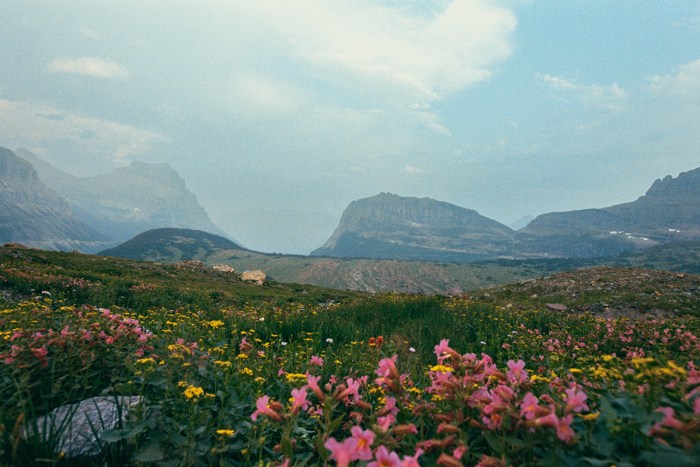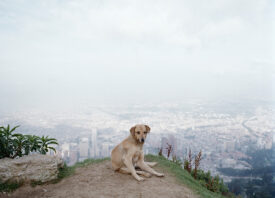Search this site
An NFT Collector on the Future of Photography and Curation in Web3

“I think all the leading photographers in Web3 have an openness to try new things, no matter how scary or weird it may seem,” the NFT collector Chikai Ohazama, who is also the founder of the virtual space Monolith Gallery, tells me. “They have a sense of curiosity and fearlessness to jump in headfirst, without knowing how shallow or deep the pool is.”

With room for fine art photography, portrait photography, street photography, aerial photography, animation, AI-generated art, and more, Ohazama’s NFT collection runs the gamut from the timeless to the experimental (often, both). In one corner, his gallery is host to selections from Natalie Shau’s revolutionary Bad Girls Club and her fantastical Dark Fairy set. Elsewhere, you can discover Tim Tadder’s Black Is A Color, meant to embrace unity, empathy, and a non-binary view of race.


In the same gallery, you’ll find fleeting moments caught in the hustle and bustle of city life, immortalized forever by the likes of Omar Z. Robles, Billy Dinh, and Michelle Viljoen. Rizacan Kumas tells the story of Iran’s Urmia Lake, a dying paradise. Meanwhile, Grayson Lauffenburger documents the vibrant movements of the skateboarding community outside Kingston, Jamaica.
We asked Ohazama to tell us more about his far-reaching collection, what drives him, and what he has planned for the future.


How and when did you first get involved with the NFT space, and what excited you most about its potential?
“In early 2021, I was in the process of shutting down my company. It’s not a fun process to shut down a company, so I was looking for something to distract me, and I thought, maybe I’ll look into this thing called ‘NFTs.’ I think it first caught my eye when Nyan Cat sold for $600K, and I thought, ‘What the hell is going on?’ So interestingly enough, it wasn’t the potential of NFTs that first attracted me to it, but it was just trying to understand what the craziness was all about.
“As I looked into it more and started to buy NFTs, I quickly went down the rabbit hole, and it has now consumed my life for over a year. At first, it was the art that attracted me, but it was the artists and the community that kept me there. I had never seen or ever been part of such an incredible community in my life. It’s crazy to think that a cryptocurrency, which is very much transactional and a financial instrument, was able to create such a warm and supportive group of people. In many ways, it is a social network that is linked together by transactions from people buying art that they love.”


Please tell us about your collection. How and where do you find new work?
“When I first started, I had no idea where to look to buy NFTs, so I actually began by looking through shill threads. Several of the first pieces I ever bought were ones I discovered in a shill thread, so as much as people often despise them, it was a place to start as a newcomer in March of 2021.
“And through those first few pieces I bought, I met so many incredible artists and collectors. They have all helped me learn more about NFTs, and they also helped me meet more people in the community. It all snowballed from there, and nowadays, I tend to discover new works and artists through my network of people, which for the most part is on Twitter.
“Initially, I was very much into 3D art, which I still love and collect, but in August of 2021, I dove deep into photography, when the NFT photography collection boom happened after Alejandro Cartegna dropped his incredible Carpoolers collection.”


You collect work from all media and genres. What inspires you to invest in multiple pieces by the same artist?
“Love, speculation, and relationships are a few reasons why I would buy multiple pieces from the same artist. If I love an artist’s work and it hits me deeply, then I tend to buy more than one. But sometimes, I believe that a work has so much potential that I buy more than one as speculation. If the pieces were to ever ‘moon’ (i.e. skyrocket in price), I’d be able to sell one but still keep one in my collection.
“And finally, I’ve been lucky enough to develop incredible friendships with some of the artists I’ve met, which gives me a deeper look into their art and their process and often leads to me buying multiple pieces. It’s sometimes to support them when they are going in a bold new direction and other times it’s because they have helped educate me and refine my level of sophistication that I’m able to appreciate their art in a much deeper way.”

Can you tell us about one or two of the photographs in your collection?
“From my photography collection, there are two pieces that come to mind. One is ‘Violence’ by Omar Z. Robles. It is a powerful image of a woman being stared at by three men. She is obviously uncomfortable and trying to get away from the situation. It is a stark reminder of what women face on a daily basis.
“When I bought the piece, I talked to many women photographers to get their perspective on the work. A few of them referred to the famous photograph ‘An American Girl in Italy’ by Ruth Orkin. The most common question that comes up with both of these photographs is whether they were staged. And the answer for both is ‘no.’ It is amazing Omar was able to capture this moment, especially with a 35mm lens, which means he had to be very close to the subjects in the picture.
“The other piece that comes to mind are my two pieces from Yatreda’s ‘Strong Hair’ collection. This collection beautifully captures the different hairstyles of people in Ethiopia. These ‘feel’ like photographs, but they are black and white 360 videos, where the camera is spinning around the subject. I think they are so well done and they have such deep meaning in how they capture Ethiopian culture.”
What do you think the most successful photographers in Web3 have in common?
“Web3 is so complex from a technology standpoint with blockchains, MetaMask wallets, and smart contracts, but then it’s also just as complex from an artistic standpoint in terms of what you can create and the technology ‘canvas’ the artists are working with. You have to be willing to jump in knowing very little about what is going on and not be afraid to ask for help. As for traits for success, I’ll refocus that question to the traits of people who are happy in this space, since success can be defined in so many ways.
“The people I see who are happiest are those that truly invest in the community and get to know other artists and collectors just as people, not as competitors or buyers. There is so much warmth and support in the NFT community that many wonder if it’s real or not when they first join. I’ve often heard from artists, photographers, dancers, musicians, and many others, who are shocked at how supportive people are as compared to what it was like in the traditional world, where things were much more cutthroat.”

In what ways do you see Web3 empowering artists, particularly those who might have been overlooked or underrepresented by the traditional art world? Is this already happening?
“In many ways, this is already happening. I remember Beeple talking about how he had never sold any of his art before NFTs because nobody cared about or wanted to buy digital art. NFTs of course changed all of that, and it has opened up an incredible international market for 3D art that never existed before.
“But since then and as we look towards the future, more and more art forms are making their way to NFTs. At the beginning of 2021, nobody wanted to buy NFT photography. The market was almost non-existent, but over this past year, it has grown tremendously to the point that OpenSea added a photography category to their site in large part due to the huge outcry from the community to do so. There are still many artists and art forms that are not getting the attention they deserve, but I think they will find their way as the NFT market matures.
“A lot of NFT collectors have never collected art before, so it’s a brand new set of buyers coming into the art market, and because they are new to art collecting, they are just beginning to learn about the craft and history, which I think will bring more sophistication to the market over time. With all that being said, there is still a lot of work ahead of us to find and uncover the hidden gems and nurture a community around them. A big part of the mission behind my gallery, Monolith Gallery, is to help all of those unseen and underappreciated artists and art forms.”

What are some of your predictions for the future of gallery spaces in Web3? Where do you think we’ll be in a year? Five years?
“The basic problem of how to display and showcase NFTs is a big area that desperately needs innovation right now both in the physical and digital worlds. NFT galleries like Vellum LA, Superchief, and Bright Moments are starting to gain momentum in the physical world. In the digital world, gallery spaces have mostly been personal galleries, a way to show off the pieces in your collection, but the idea of a public gallery space that is more like a museum is starting to emerge.
“I think most of the public gallery spaces so far are being curated by teams that are internal to their respective organizations, and so I do think Monolith Gallery is breaking new ground in this space by having an open curation platform.
“As to where we’ll be in five years, it’s hard to even predict where we will be in a month given how fast this space moves. I do think there will be at least one, if not two, major downturns in the next five years, where most of the NFTs will go to near zero and many will leave the space during those times. However, I also believe that the high-quality art and artists will survive and remain, and they will be much stronger and more valuable because of it.”

You can follow Chikai Ohazama on Twitter at @lifeofc.


